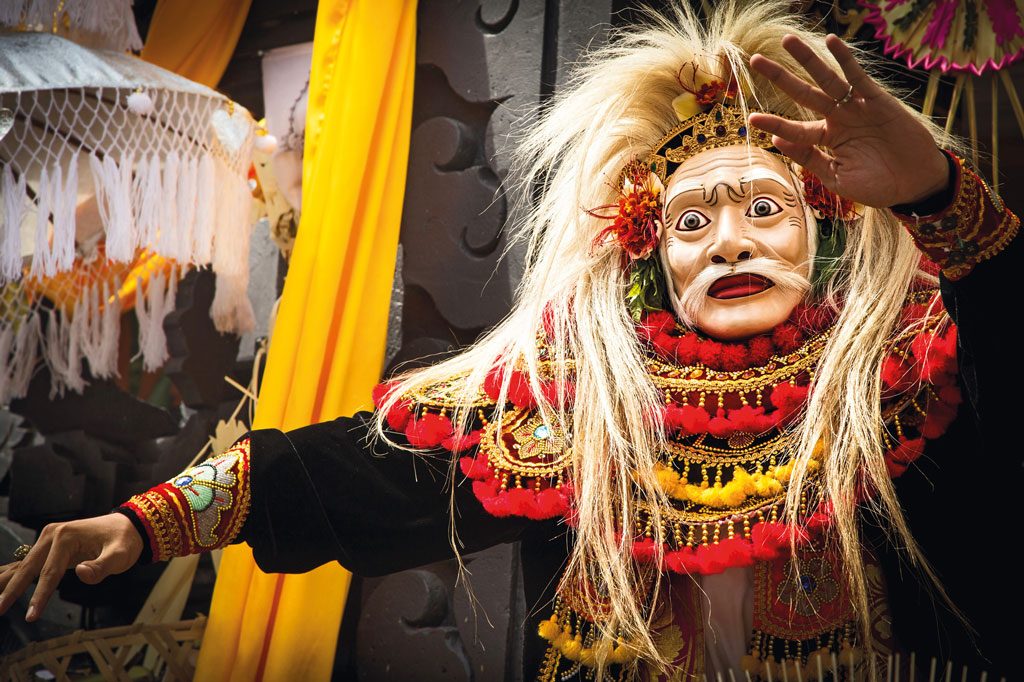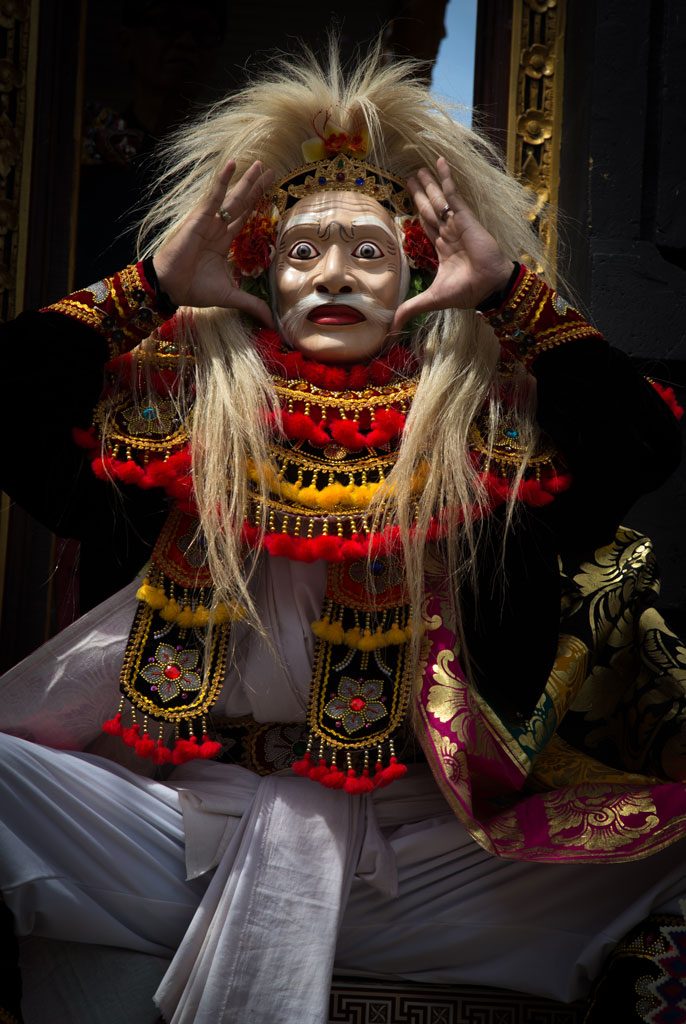Watching a Topeng Dance (mask dance performance) we might think that the dance is far less complicated than other dances of Bali. But, actually to perform a mask dance, a dancer should go through a long and tough learning process. Not only to master a numbers of dance skills, but also to immerse themselves into the character presented by the mask.

There are some Topeng dances in Bali, the title of the dance is usually taken from the character of the mask. Topeng Werda Lumaku or widely known as Topeng Tua – Old Man Mask Dance, usually performed by a male dancer, is one of a few mask dances on the island. The Old Man Mask dance and a few others like it used to only be performed as part of religious rituals, such as Odalan (Temple ritual) and other sacred ceremonies. Nowadays, a short and simple choreography of Topeng Tua can be performed as cultural entertainment.
Before wearing the mask made of the Ylang-ylang wood, be it in a sacred ritual or commercial stage, the dancer is always seen making a little prayer to invoke blessing from the supreme god and to intensify his concentration so he can be one with the soul of the mask. Once the mask is worn, the young dancer behind the mask manifests the movements of a grandsire.

Entering the stage, the dancer walks slowly and often pause before continue walking. His shaking fingers shiny as the light glistens off the gemstones rings he wears. His long white grey hair glints under the light. Sometimes, he sweeps his forehead with a cloth as if cleaning drops of sweat. His grand costume represents a character that is a descendant of a wise old aristocrat. The choreography usually depicts an act of a grandsire remembering his youth.
Even though the dancer seems to be moving slowly and routines relatively limited, there is some highly skilful Balinese dancing techniques going on. The dancer holds both his arms up for the entirety of the performance. His feet position and movement is slow but firm. And even his fingers are continuously moved to strengthen the expression he is illustrating.
Complete with a gamelan orchestra (Bali’s traditional ensemble) accompany the dance. Watch the performance carefully and one can pick out the meticulous codes and patterns within the dancers movements followed quickly by the gamelan troupe. Unlike other dances, such as legong, pendet, and many others where the dance routines and music are arranged together, the dancer of Topeng Werda Lumaku take the lead for when and what sound to be born by the gamelan musicians, as if they are communicating intensely through the air during the performance. Watch the dance and you will find that this dance is very charming and captivating.
GALLERY

.jpg)
.jpg)
.jpg)
.jpg)








